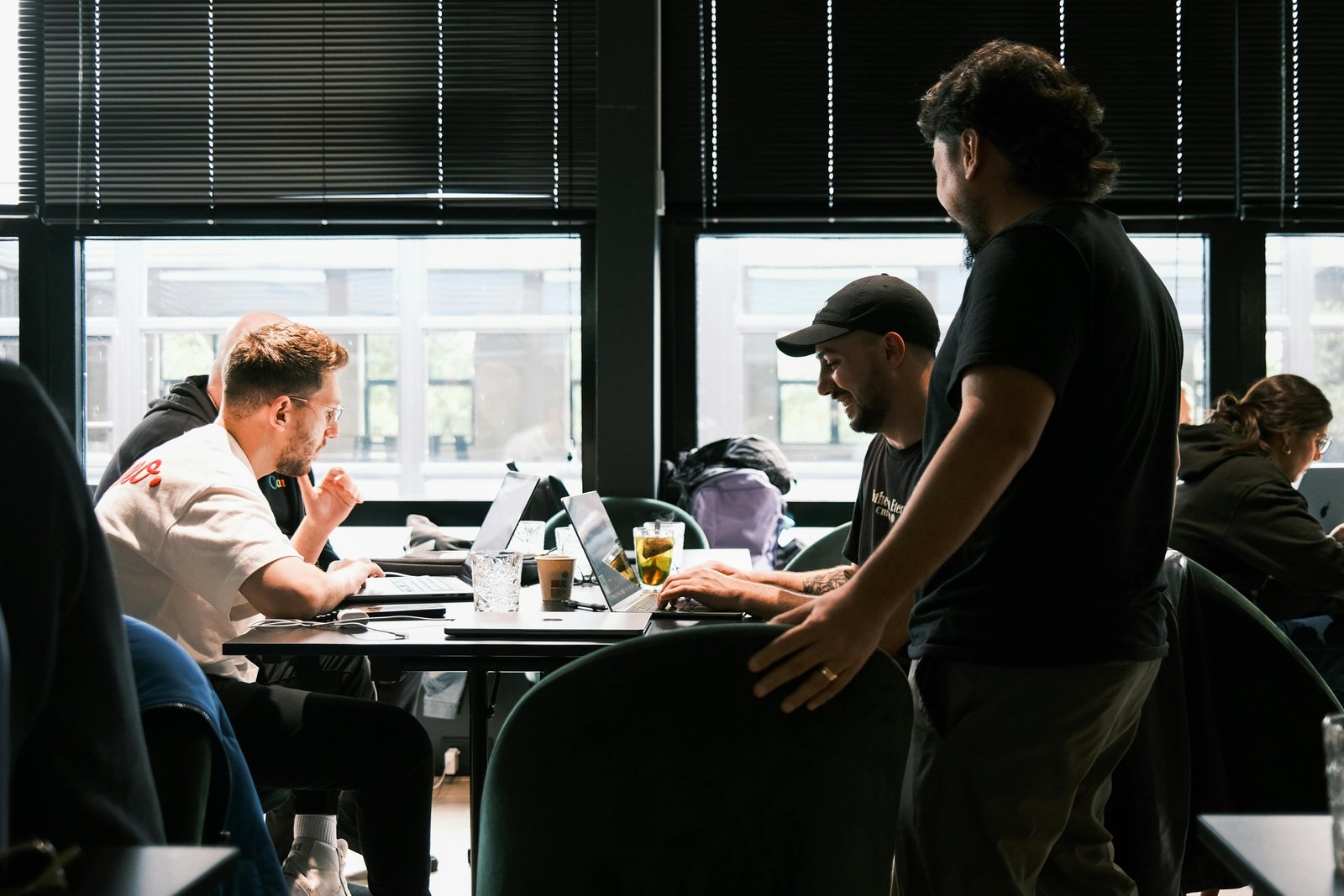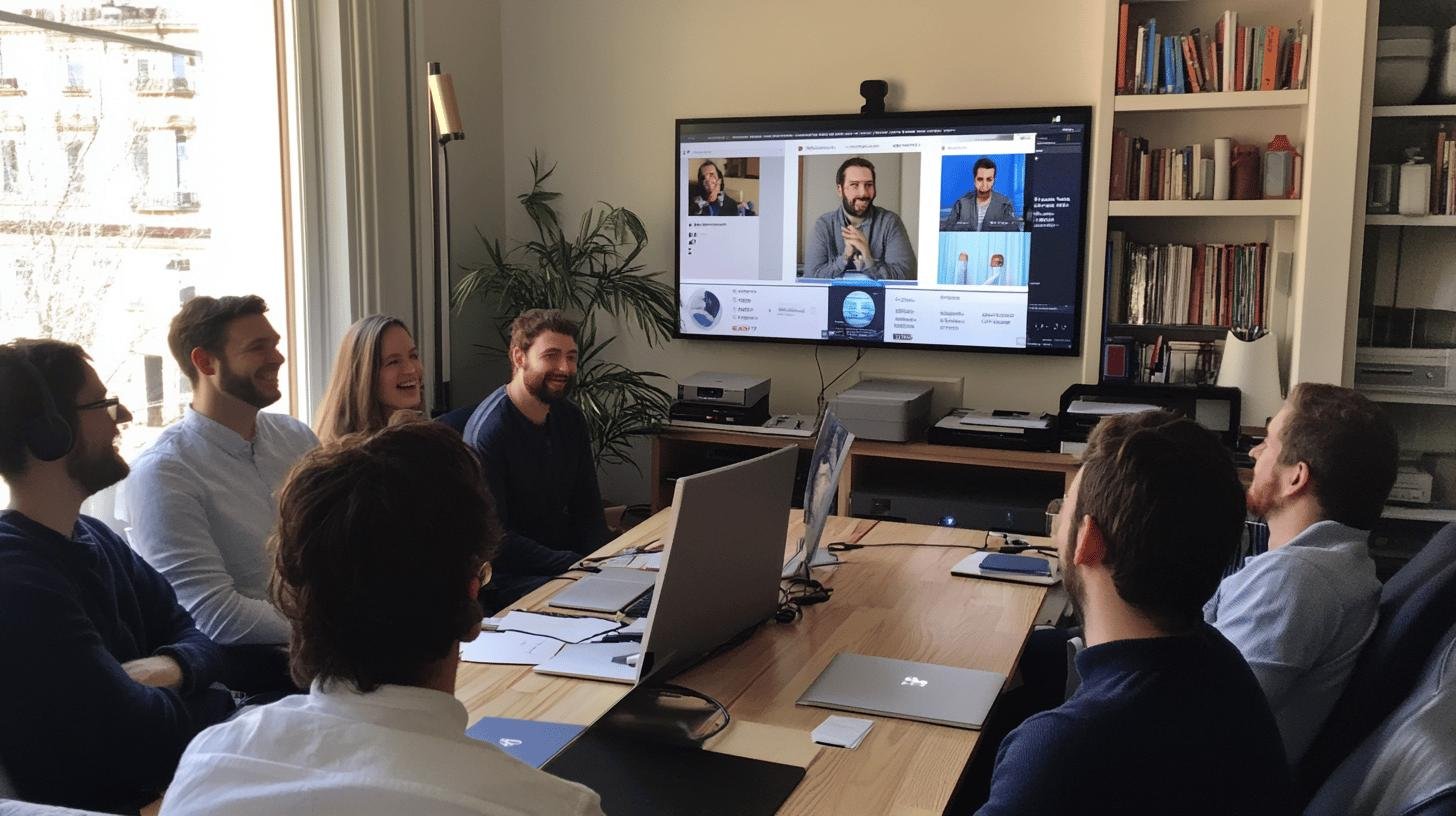Think AI makes work less human? Think again! Imagine brainstorming sessions without the trouble of scheduling conflicts or miscommunication. AI can turn that dream into reality by streamlining how we collaborate. From virtual assistants that prioritize tasks to real-time feedback tools, AI is revolutionizing workplace teamwork. In this post, we will be looking at how AI can help with collaboration in the workplace to increase productivity. Ready to supercharge your collaboration game? Let’s get started!
AI Tools for Enhancing Workplace Collaboration
AI tools are like virtual office buddies that make work simpler and more enjoyable. They help set priorities, automate mundane tasks, organize schedules, and even suggest solutions through data analysis. Make sense, right?
AI-driven communication platforms elevate collaboration by offering real-time feedback and seamless interaction across teams. Imagine a digital space for chatting, sharing files, and collaborating smoothly. These platforms also support social interactions with chatbots for customer service or data collection using office sensors. This translates to less time figuring out things and more time getting things done.
- Slack: Streamlines team communication with channels and tool integrations.
- Microsoft Teams: Features video calls, chat, and file sharing for enhanced collaboration.
- Trello: Visualizes projects with boards, lists, and cards, offering real-time updates.
- Asana: Organizes tasks, sets priorities, and tracks project progress with ease.
- Zoom: Hosts virtual meetings, webinars, and breakout rooms for effective discussions.
These AI tools simplify communication, align teams, and boost productivity. With AI handling the details, teams can focus on working together to meet their goals.
Improving Team Communication with AI

Communication issues can be a big deal for teams. Misunderstandings and missed messages can slow things down. Here’s where AI swoops in to save the day. Voice-to-text technologies and autoresponders are great examples. Imagine speaking your thoughts and getting them instantly converted to text or receiving quick, automated replies when overwhelmed. It’s like having extra help!
AI communication platforms are the needed change. They make conversations and idea-sharing easier, supporting social interaction within teams. These tools summarize meetings and list action items, ensuring everyone knows their duties. This clarity helps teams stay focused and work smoothly together.
AI Chatbots for Real-Time Communication
AI chatbots act as top-notch assistance for real-time communication. They provide instant responses, answer questions, and even complete tasks. Need to schedule a meeting? Just ask the chatbot. Searching for a document? The bot has you covered. By tackling these essential tasks, AI chatbots free up time for team members to focus on bigger things, boosting efficiency.
With AI, team communication becomes seamless and efficient. Everyone stays informed, roles are clear, and collaboration gets a significant boost. It’s like having a well-oiled machine with every part working perfectly together. Let AI help your team communicate better and achieve more.
AI in Task Management and Workflow Optimization
AI acts like a super-smart assistant that never tires. It manages tasks, optimizes workflows, and ensures efficient operations. Think of it as the ultimate project manager that never takes breaks!
Specific AI tools for project management are revolutionary. For instance, StormAI focuses team efforts on strategic thinking by analyzing project goals and outcomes. It offers natural language interaction, making it feel like you’re working with a colleague. Automation tools save time by providing templates, suggestions, and automating tasks, leaving more room for creativity. AI also balances workloads by analyzing patterns and completion times, promoting a balanced work environment.
These AI tools simplify task management, keeping everyone on track and workflows smooth. They consider task completion and suggest optimal work distribution. This ensures balanced workloads, allowing everyone to focus on their strengths. By integrating AI into task management, teams not only work smarter but also achieve their goals efficiently.
Enhancing Virtual Collaboration with AI

Virtual collaboration can be challenging. Teams spread across locations face issues like miscommunication and unclear roles. This makes staying connected tough.
AI tools support flexible work and agile spaces, offering resources and insights to build team confidence. AI can summarize meetings and list action items, ensuring everyone knows their roles and responsibilities. This is especially helpful for remote teams needing to stay coordinated across distances.
- Zoom AI: Facilitates meetings with real-time transcription and automated summaries.
- Slack with AI: Enhances chat with intelligent message sorting and priority alerts.
- Microsoft Teams AI: Provides smart scheduling and task management for remote work.
- Asana AI: Organizes tasks with automated reminders and progress tracking.
AI’s Role in Decision-Making and Innovation
AI serves as a super-smart advisor who never sleeps. It assists decision-making by quickly and accurately analyzing large datasets. This allows for better, faster decisions without getting buried in endless data.
AI uses predictive analytics and pattern recognition for fresh insights and suggestions. Consider deciding the best marketing strategy. AI analyzes past campaigns, customer behaviors, and trends to propose effective strategies. It’s like having a data-powered crystal ball! AI reveals unnoticed opportunities and risks by recognizing patterns.
AI Tools Facilitating Innovation
AI tools spark creativity and innovation in the workplace. Here are some amazing tools:
- StormAI: Assists with strategic thinking and natural language interaction.
- IBM Watson: Uses natural language processing for idea generation and strategic planning.
- Google AI: Offers data analysis and pattern recognition tools for decision-making.
- Microsoft Azure AI: Provides machine learning for predictive analytics and pattern recognition.
- H2O.ai: Offers open-source AI for data analysis, aiding brainstorming and innovative solutions.
These AI tools inspire brainstorming, leading to creative ideas. Exploring AI capabilities becomes exciting and engaging, sparking new creativity levels.
AI is transformative for decision-making and innovation, enabling teams to make smarter, faster decisions and discover creative solutions previously unnoticed.
Overcoming Challenges of AI Integration in the Workplace

Integrating AI at work can be tricky. Challenges include job security fears, data privacy concerns, and training needs. Employees might worry about how AI can help with collaboration in the workplace due to the lack of understanding of new tools. There’s always anxiety about data security with advanced technologies.
Leaders are vital in easing AI adoption. They should provide training and resources to simplify AI tool usage. Demonstrating AI’s benefits aligned with company goals can ease adoption. When leaders show AI’s potential for easier, more efficient work, employees are likely to embrace it, like having a coach guide a game plan.
Encouraging AI Experimentation and Building Trust
Reducing AI integration anxiety can happen by encouraging experimentation. Let teams explore AI tools and discover their preferences. Offering incentives for innovative AI usage can make this engaging and fun. Transparency is crucial, too. Explaining AI’s workings and addressing ethical concerns builds trust. It’s like sharing the rule book so everyone understands and feels at ease using new tech.
Addressing fears of job replacement and data privacy is essential. Assure teams that AI aids, not replaces. Explain that AI handles repetitive tasks, providing time for creative and strategic work. Also, highlight data protection measures. When employees understand AI as a helpful tool and that their data is safe, they’re more likely to accept its integration.
Conclusion
We explored the transformative role of AI in enhancing collaboration within the workplace. One significant aspect we covered is how AI improves team communication; for instance, chatbots can provide instant replies, helping teams resolve queries quickly and efficiently. This leads to faster decision-making and reduces delays caused by waiting for responses.
Additionally, we examined how AI streamlines task management by automating workflows and providing reminders, ensuring that projects stay on track and deadlines are met. By intelligently prioritizing tasks, AI tools can help teams focus on what matters most, enhancing overall productivity.
Lastly, we discussed how AI facilitates smoother virtual collaboration through advanced tools that support real-time communication and file sharing. AI also aids in decision-making by offering valuable insights drawn from data analysis, allowing teams to make informed choices based on trends and performance metrics.
In simple terms, AI can significantly simplify our work lives, making processes more efficient and collaborative. Embracing these technologies can lead to a more productive and harmonious workplace environment.
FAQ
How does AI help with collaboration in the workplace?
AI spruces up collaboration by offering tools like chatbots that give real-time feedback and virtual assistants that organize schedules. These tools boost seamless communication, making team projects smoother and more interactive.
What are some typical use cases for artificial intelligence in the work environment?
AI shines in tasks like automating repetitive chores, managing customer interactions via chatbots, and enhancing team communication. Tools can analyze data to suggest improvements, fostering efficiency and innovation in various work settings.
How can AI improve workplace efficiency?
By automating routine tasks, prioritizing goals, and organizing workloads, AI pumps up workplace efficiency. It allows teams to focus on strategic tasks rather than getting stuck in mundane activities.
How is AI helpful in the workplace?
In the workplace, AI is like that extra set of hands you’ve always wanted! It speeds up processes, clarifies roles, enhances communication, and suggests optimal solutions based on data, reshaping daily operations.
What are the benefits of AI in the workplace?
AI saves time, improves accuracy, and increases productivity by automating tasks. It makes decision-making smarter with data-driven insights and supports flexible collaboration, especially in remote work setups.




